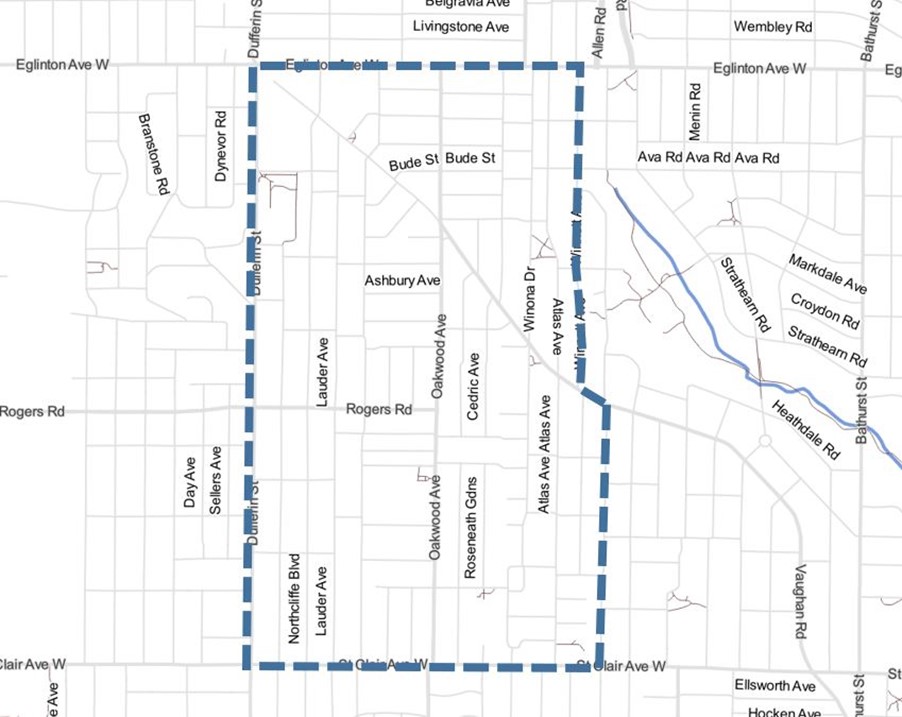
In consultation with the local community, the City is developing a Neighbourhood Streets Plan (NSP) for the Oakwood Village area that identifies, prioritizes and recommends short-term actions and long-term changes to traffic operations and road design to support safety for all modes of transportation.
The Neighbourhood Streets Plan aims to address four main areas of concern in the project area:
The project area is located between Dufferin Street to the west, St. Clair Avenue West to the south, Eglinton Avenue West to the north, and to the east from Arlington Avenue at St. Clair Avenue West to Vaughan Road to Winnett Avenue at Eglinton Avenue.

While we aim to provide fully accessible content, there is no translation or text alternative available for some of the content on this page. If you require translation, alternative formats or need assistance understanding our maps, drawings or any other content, please contact us at 416-392-2896 or email OakwoodVillageStreets@toronto.ca.
Neighbourhood Streets Plans (NSPs) are a new service for neighbourhoods where traffic and travel patterns challenge the safety and mobility of people using the streets. Through the NSP process, a team of City staff will work with communities to identify local issues and opportunities, prioritize the greatest needs, and recommend changes to traffic operations and street designs.
NSPs consider the needs of all road users and emphasize the safety of vulnerable road users such as seniors, school children, and people walking and cycling.
The Oakwood Village NSP will result in short-term actions (one to two years) which can be made using temporary, flexible materials like signs, paint, and bollards. The NSP will also identify longer term changes which can be accomplished alongside future programmed road work.
The outcomes of each NSP will be different based on local conditions and the needs of each neighbourhood. Generally, NSPs will recommend actions related to motor vehicle speed and volume management, and traffic safety conflicts on local streets.NSP recommendations are informed by the City’s Traffic Calming Guide, Vision Zero Action Plan, and Complete Streets Guidelines. Some examples of actions that may be considered include:
Public consultation on the Oakwood Village Streets Plans will take place in two phases.
The participation of local residents and stakeholders is essential to identifying appropriate actions and effective changes for the Oakwood Village neighbourhood.
The consultation will take place over two phases.
Information, reference materials, and reports on public consultation activities will be posted here.
Download and read the Public Consultation Report for Phase 1 of the Oakwood Village Neighbourhood Streets Plan.
Feedback received in Phase 1 consultation centred around five main themes:
A second phase of consultation is planned for Spring 2025 to receive feedback on proposed changes for the neighbourhood.
Public feedback, along with technical and policy considerations will be used to inform City staff recommendations and decisions to be made by City Council.
Please register to be added to the project list to receive updates by email, including information about public events or online surveys.